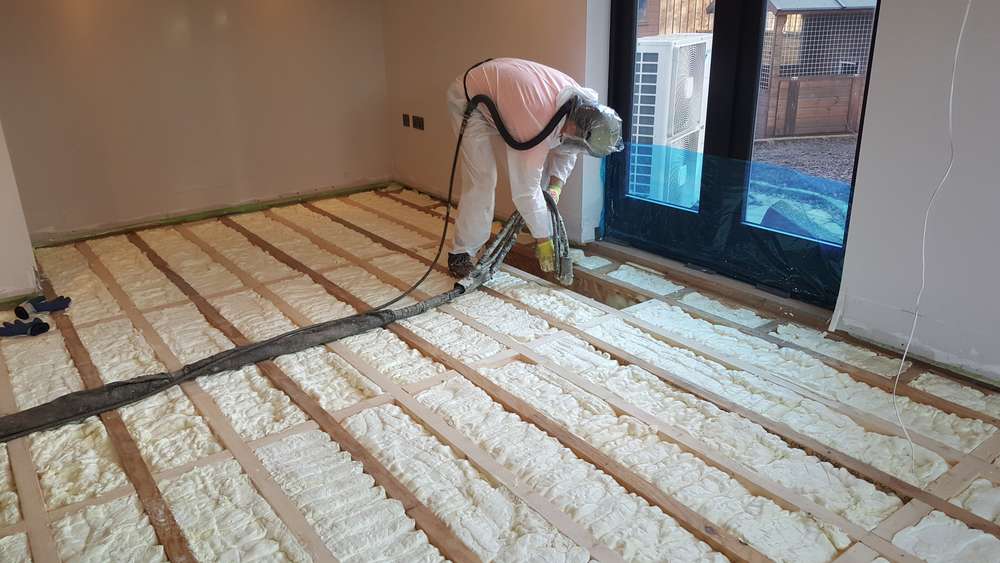Attic Spray Foam Insulation Mitchelstown
Spray Foam Insulation Mitchelstown
3 Bed Semi Attic Insulation Mitchelstown

Attic Insulation Mitchelstown
Spray foam is versatile and can be used for a wide variety of purposes. Spray foam is useful in roofs, windows, attics, underfloor heating systems, interior and exterior walls, as well as roofs.
Spray foam insulation will keep your home warm during winter and cool in summer. Spray foam insulation allows the house to breathe because it allows moisture-laden atmosphere to escape through its “Cell” structure.
Benefits of Spray Foam Insulation for your home
Other applications include farm houses, industrial and commercial buildings, sheds as well shipping containers and vessels.
It also creates a shield around your house that keeps out the rain and cold wind. It allows the heat from your home to escape, which is what most other insulating products today fail to do.


Cost Price Of Spray Foam Insulation
Spray foam insulation, which is the most effective insulation material, is undoubtedly the best. It has a higher U value than other insulating materials such as rock wool, fiberglass and cellulose.
Spray foam insulation is also a good sound barrier. It reduces outside noise by up to 50%. It is a great advantage if a company or home is in a densely populated area or close to an airport.
Insulate Your Mitchelstown Property Properly
It is used to eliminate sound traveling from one room into another, or across floors in the interior walls. It is particularly useful in bathrooms, where the noises of flushing toilets and showers can be annoying.
It’s simple to use, and it doesn’t disrupt your everyday activities.
It is possible to insulate a traditional Irish house in one day.
Encasing and isolating pipes reduces noise in the walls or under-floor.

Boards should be laid over the joists if the loft or attic is to be used for storage. The insulation will not be thick enough if it is only between the joists.
It reduces sound transference by up to 50% when used in walls, attics and roofs. The dense composition of the material and the application process result in a completely airtight enclosure. It is able to block sound from the exterior environment (e.g. traffic, pedestrians, etc.) and prevents infiltration in areas where there are airports or heavy industries.
Spray foam insulation also stops sounds from within a structure being transmitted to floors below, above, or into adjacent rooms. Spray foam insulation could reduce the amount of noises generated by structures such as running showers or washing machines.
Spray foam insulation is flexible but densely packed with millions if minute air bubbles. This will absorb vibrations from the floor as well as the sound waves. Spray foam insulation reduces sound transmission by sealing any cracks or crevices that airborne noises can travel through.
Spray foam insulation also dampens, if it is not eliminated completely, sounds that could originate from beneath a floor such water flowing through pipes. It completely surrounds the pipes, keeping them in place and preventing them from rattling. It also eliminates the sound caused by hot water flowing through pipes. The heating system heats wooded Joists, causing them to expand, creak and groove.
It also keeps heat from escaping to upper floors, which causes lower floors to become colder, which in turn makes them require more heat to keep warm. The upper floors become too hot.
It is possible to insulate lofts if they are accessible and have no damp or condensation issues.
An uninsulated home loses 25% of its heat through its roof. Insulating your attic, loft, or flat roof can reduce heat loss and lower your heating bills.
Rolls of mineral wool insulation can be used if access is good and the loft joists have regular dimensions. The insulation is first laid between horizontal beams called joists. Once that layer has been laid, another layer of mineral wool insulation is added at right angles.
In order to have enough insulation, raise the floor so that enough mineral wool can be fitted below the new floor. You can either fit timber battens between the joists or buy plastic legs that are specifically designed to fit the joists. To prevent condensation, make sure there is a vent between the insulation boards and the insulation.
You should not squash the mineral wool while you place the boards on top. This will decrease its insulation value.
Insulation blocks heat escape from living spaces. Therefore, loft insulation will cool your loft space, which can lead to condensation or damp problems. You may need to increase ventilation if you install loft insulation yourself.
You can also insulate the loft by fitting insulation between the rafters. These are the sloping timbers that form the roof. You can either use rigid insulation boards which are cut precisely to fit your loft, or spray foam insulation between the roof rafters.
Some companies might offer to repair your roof if it is damaged or leaky. They will spray foam insulation directly onto the roof’s underside without fixing the problem. This is something that we do not recommend. Before you add insulation to your roof, make sure it is in good shape.
You can use your loft to heat the space, but you will need to create a separate room on the roof.
You must insulate your loft if you plan to use it as a living area or if you have one.
For your home to remain fresh, dry, healthy and clean, it needs air flow. An experienced installer will not block or seal any intended ventilation. Do not cover grilles, airbricks, or vents if you are DIY-insulating.
A professional can install blown insulation in a loft that is difficult to reach. They will use special equipment to blow the appropriate insulation material into any space. They might use treated cellulose, mineral wool fibre or polyurethane foam.
Flat roof insulation may save you the same amount as loft insulation on your heating bills. The size of your flat roof will affect the savings.
If your loft is easily accessible, doesn’t have damp problems, and has a flat roof, it could be insulate yourself. Professional installation is recommended for those with damp problems and more complicated insulation systems.
Your loft hatch could become colder due to the cooler air. Install an insulated loft hatch to prevent cold draughts.
Insulating your ground-floor is a great idea to keep your property warm and lower your energy bills.
Insulating a loft is an effective way to lower heating bills, be more efficient and warm your home in the winter. Even if you already have insulation, it is crucial to have the best amount in order to make it effective.
Loft floor rolls are the traditional choice. These roll out along the loft floor. They are quicker to lay than insulated flooring boards. They are available in loose and encapsulated rolls (blanket) and can be used for both top and bottom layers. To create a storage platform, they can be boarded using stilts.
These tips and recommendations aren’t listed in this article’s tool and material list. Make sure you read the entire article to ensure you are fully equipped to insulate your loft floor safely.
Even though insulation is often present in homes, some may not be effective. This could be due to insulation being compressed by storage boards placed over it or if it hasn’t been topped up in the long-term. It is possible for loft floors to be as low as 25mm (deeper) in older properties.
It doesn’t have to be removed from your loft floor insulation. To get the recommended amount, just add one to three layers more. The article will provide more details about how much you should be consuming.
The loft floor’s joist spacings will influence the width roll that you choose. This is because insulation is rolled between these joints. We recommend you select one that’s close to the spacing of your joists. This minimizes the need to trim.
The insulation’s thermal resistance. If you only want to lay loft rolls, there is an alternative method that measures the insulation thickness. For more information, see the section ‘How do I calculate the thickness of loft floor insulation?

Parkhill, Dublin
01 5255297


